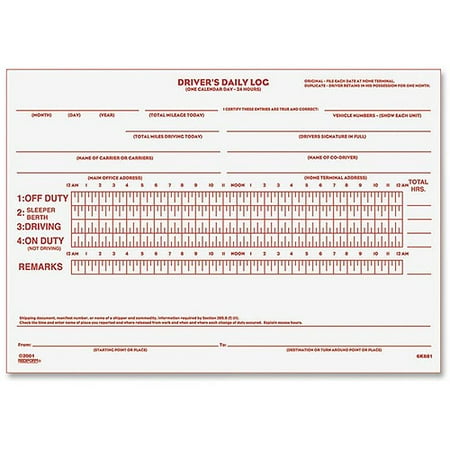Cdl Drivers Log Software


Self-Auditing the Driver Logbook: Why It’s Necessary There’s an old saying that goes something like this: “take care of your own business; otherwise someone else will take care of it for you.” This is certainly true when it comes to self-auditing the driver logbook. As the owner or manager of your trucking company, you’re the person who bears ultimate responsibility for the accuracy of all logs. It’s up to you to catch any problems with the log before government inspectors do so that you can correct any errors. Should you fail to perform this duty, the Federal Motor Carrier Safety Administration (FMCSA) will do so for you. That’s something you don’t want to happen, unless you enjoy getting fines and possibly being shut down. Here are some general rules regarding your drivers’ logbooks you must constantly monitor: • Drivers must record both on- and off-duty for each 24-hour period.
I am the only Driver that uses DDL at my company but I find other drivers are. Drivers Daily Log' 'I've been a driver for 5. Drivers Daily Log Software and.
They must do so using either a manual form or an automatic recording device. They must provide you with a signed accounting of their total time on duty during the previous seven days. They must submit this record to you within 13 days after filling it out. • You are required to keep your drivers’ log records for a minimum of six months from the day you receive them. To allow for lag time between completion and submission to the company, you should add an additional 13 days to this requirement.
An exception to this rule exists if the logbooks contain information pertaining to accidents, safety violations, lawsuits, etc. In such cases, you must keep these records indefinitely. Performing a Self-Audit: Areas to Cover When performing an audit of your drivers’ logbooks, you should follow these steps: • Ensure that you have all the logs.
If some are missing, then consult the driver immediately. • Make sure the logs are completely filled out and legible. • Check for documentation of pre- and post-trip vehicle inspections. Ensure that all required driver’s vehicle inspection reports (DVIR) are present and properly completed. • Make sure that the driver has documented all loading and unloading times. • Ensure that the driver recorded all fuel stops.
• Review the record of hours for accuracy and completeness. • Verify the presence of bills of lading and other necessary documentation. Possible Areas of Falsification Inaccurate or falsified logs are ticking time bombs waiting to go off in your face. To detect them before they become insurmountable problems, pay special attention to the following areas: • Fuel receipts, especially dates.
• Toll tickets. While tickets may sometimes have the wrong time or date, drivers should catch these errors and note them in their logs. • Scale tickets. Verify correct times and dates. • Documentation of any speeding tickets or other citations the driver may have received. • Mileage reports.
Always check these against either PC Miler or Rand McNally. While having more miles than these sources show is permissible, having less than they record is a major red flag. Crossover Dj License Key: Full Version Software. • On- and off-duty notes. For example, if the record shows that a driver delivered freight while off-duty, then you have a problem. • Driver’s signature in all required areas of the logbook.
As mentioned before, you are ultimately responsible for ensuring the accuracy of driver logbooks. By following the directions in this post, you can correct issues before they get out of hand.
This will help to ensure both public safety and your own future as an owner of a transport company. Achtung Fertig Charlie Torrent on this page. And remember: when it comes to trucking company software, no one beats TruckingOffice. Prove to yourself how good our product is by taking it for a free 30-day test drive starting today.